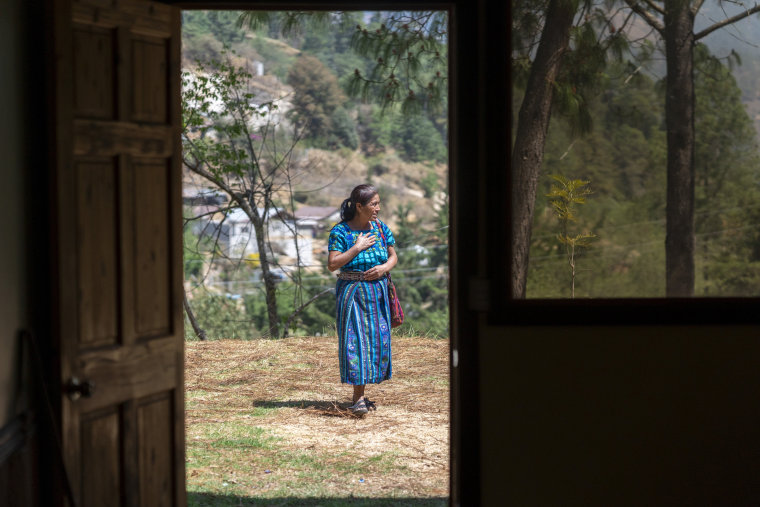Desperate young Guatemalans try to reach the U.S., even after migrant relatives’
COMITANCILLO, Guatemala — Every night for nearly two years, Glendy Aracely Ramírez has prayed by the altar in her parents’ mud-brick bedroom where, under a large crucifix, is a picture of her sister Blanca. The 23-year-old died alongside 50 other migrants in a smuggler’s tractor-trailer in Texas.
“I ask God for my family’s health and that I might get to the United States one day. My mom asks God that she won’t have to see another accident,” said Glendy, 17, who has already packed a small backpack for her own journey from the family’s home 8,900 feet (2,700 meters) up in Guatemala’s highlands.
Her “coyote” postponed it for a few days because of a flare-up in violence among Mexican drug cartels that control migrants’ routes to the United States, but she is undeterred.
Tens of thousands of youths from this region would rather take deadly risks — even repeatedly — than stay behind where they see no future. Blanca’s fatal journey was her third attempt to reach the U.S.
“I want to go there, because here there are no opportunities, even though Mom says that I’ll suffer what Blanca did,” Glendy said as she sat with her mother, Filomena Crisóstomo, in their tidy dirt-floor courtyard. “I’d like to have a house, help my family and get ahead.”
The record-high numbers of migrants illegally crossing the U.S.-Mexico border have made migration a top concern in this U.S. presidential election year. Among those migrants, the largest group of unaccompanied minors has been from Guatemala — nearly 50,000 of the 137,000 encounters recorded by border authorities in the last fiscal year.

Most come from tiny hamlets in the predominantly Indigenous Western Highlands. Daily wages top out around the equivalent of $9, far below the supposed legal minimum. In tiny plots of brittle clay soil — often the only collateral for loans to pay smugglers’ fees that can reach $20,000 — many families grow corn and beans to eat.
Little else sprouts from the steep mountainsides except for the exuberantly decorated, multi-story concrete homes built with remittances from loved ones in the United States — constant reminders of what’s possible if only one makes it “to the north.”
In the small town of Comitancillo, two murals serve as a different reminder — they’re memorials to the nearly two dozen local migrants who died in recent mass tragedies. They either asphyxiated in the trailer in San Antonio, Texas, in June 2022, or were shot and set afire by rogue police officers in Camargo, Mexico, in January 2021.
It took less than a week after the remains from the Camargo massacre were returned to Comitancillo for burial before the first surviving family member left for the U.S.
And with a 17-year-old boy who made it to Florida this winter, now at least one relative has migrated from nearly all of the families since the massacre, said the Rev. José Luis González, a priest with the Jesuit Migration Network. The lone exception was an older man whose family was already north of the border; he died trying to make it back after being deported, González said.
“It’s an evident sign that the fear to stay is bigger than the fear to go,” said González, who started ministering to the affected families when they traveled some six hours to Guatemala’s capital for DNA tests to identify the remains.
Many families credit the Jesuit group for being the only institution that has stayed by their side, regularly traveling to Comitancillo to provide legal updates — nearly a dozen police officers were sentenced last fall in the Camargo case — as well psychological, humanitarian and pastoral assistance.

On a recent morning, about 50 relatives of those lost either in Camargo or San Antonio gathered for a meeting with the Jesuit group that included workshops to process depression and grief. Most were women and children speaking Mam, one of Guatemala’s two dozen Mayan languages.
One of the handful of fathers at the meeting was Virgilio Ambrocio. The eldest of his eight children, Celestina Carolina, was making less than $90 a month as a housekeeper in Guatemala City and sending half of that back home to help feed her siblings. So she decided to try her luck in the United States, and died at 23 in the trailer.
“The hardest part is, who’s going to help us now,” Ambrocio said as dust swirled around his home. His wife,…
Read More: Desperate young Guatemalans try to reach the U.S., even after migrant relatives’

